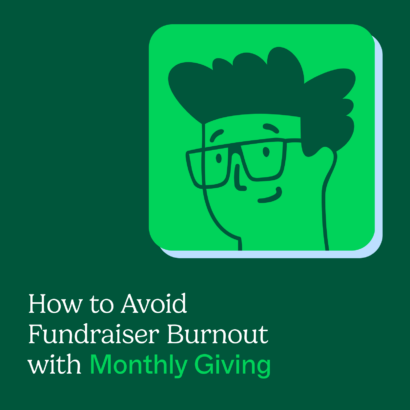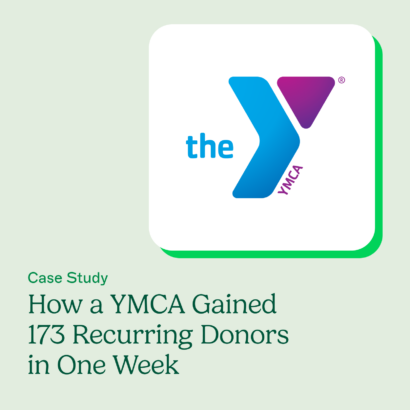Have you ever been asked about the process you use to do something only to realize that it’s not fully documented, but rather, saved in your head? This happens in organizations with leaders, team managers and yes, sometimes even with our donor records. We know who the big donors are or the key supporters of our organization, but do we have that recorded somewhere? If your development director was no longer in his or her role, would the rest of the team know how to access donor records and information?
The importance of data tracking
Tracking donor information is an essential part of growing your fundraising program. Through these data points, you’ll be able to customize your asks, engage with donors who have special events happening in their lives, watch for patterns in donations made and donor types, and be able to use this information to create niche fundraising campaign based on donor type. At a minimum, by tracking donor information, it supports your organization in being able to:
- Create customized donor campaigns and communication
- Pull real-time reports on giving levels and percentage to giving goals
- Engage with donors on an individual level, creating better relationships
- Train new employees or team members
- Keep historical data in one place so that 5, 10, 15 years down the road, everyone in the organization is still on the same page
The makeup of a great donor profile
While there are many data points you could track on your donors, start small and work your way up. The size of your organization, staff resources and technology available will play a role in how deep you go with your donor profiles. May we suggest:
Must-haves
- Full name
- Address
- Phone number (have a couple of options here—work, home or cell)
- Email address
- Giving history (last gift made, total gift amounts and average gift amounts)
- Interaction notes (when did they receive a mailer, phone calls/conversations, event attendance, etc.)
Nice-to-haves
- Birthday (or age)
- Marital status (or linked relationships—kids, other family, etc.)
- Occupation
- Income level
- Additional donor history (i.e.: number of years as a donor, frequency of giving, online vs. offline giving)
- Additional relation to the organization (i.e. are they a board member? Committee volunteer? Staff? Former staff?)
Bonus points
- Social media profiles
- Giving patterns
- Additional interests
How to collect donor information
Your online donation forms and mailed donation forms are the easiest places to collect basic donor information. Think strategically about how these forms “talk” to your database or CRM. For instance, do you need the name field separated into first and last name? Do you need to indicate phone type (i.e. work, cell, home)? Keep those forms short and sweet. Think about your “must-have” information fields and include those on your donation forms. Keep the nice-to-have questions for other donor touchpoints such as during in-person events.
Sending out donor surveys can be another way to connect with your donors and expand on getting some of that additional demographic information such as ages, gender, preferred communication methods, etc. When sending donor surveys, make them short and sweet. In fact, if you have the means to do so, you can keep your donor survey live year-round and offer it as a link within a donor thank you email or on a direct mail piece. If you go this route, however, ensure that you either have a way for your survey questions to automatically “talk” to your CRM or that you have identified a person on your team to input all survey answers in a timely fashion.
The validity of a CRM
You have all this great information on your donors and now what? If you don’t already have one, I highly recommend investing in a CRM (customer/client relationship/constituent management system) to help you gather and track all of your donor information. Using a CRM as your donor database tool is something that all team members within your fundraising organization would have access to and, in turn, add real-time notes and information as you interact with donors.
Don’t be afraid to step out of your CRM, either. I know of several organizations that use CRMs as a conversation tool for development and advancement teams. For instance, one higher-ed organization has its CRM administrator pull notes reports each week. The team gets a copy of those and gets together for a quick 30-minute team meeting every Monday morning whereby each person of the team gives a quick take on conversations, meetings or other interactions they’ve had with donors the week prior. This keeps everyone on the same page and, educates the team together on which donors or prospects would be good to solicit down the road.
Keep your data in one spot
As fundraisers, we can continue to do our best work if the data we have is also the best…and in one central location. If you find you have to pull donor records from your database, donor preferences from your CRM and specialized donor information from a spreadsheet, you’ll miss something in the process. Likewise, it’s important to communicate the process of donor collection to everyone that touches donor information. Your marketing team should know to update “where did you find us?” information in the CRM just as well as your annual fund manager knows to update the donation amounts, dates and methods in the donor’s record, too.
At the end of the day, it all comes down to process. Determine which donor information is the most critical to your organization, how you will track it, who will “own” that tracking process and how you will use that information to grow your fundraising efforts.



